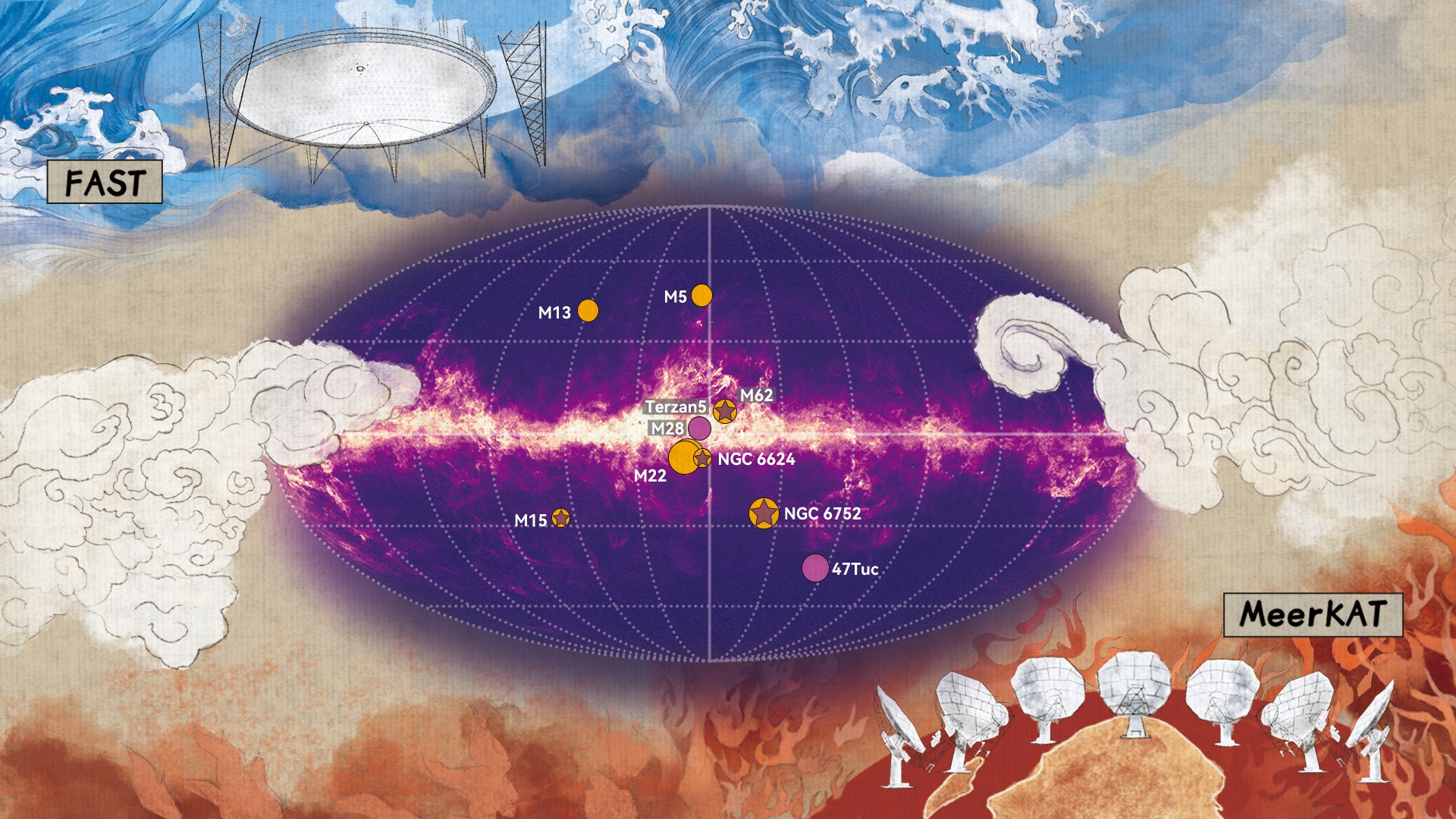In a milestone of international astronomical collaboration, Prof. Di Li's team at Tsinghua University, along with institutions in Italy, Australia, and Germany, have completed a high-precision polarization census of pulsars in globular clusters, utilizing the combined power of the FAST radio telescope in China and the MeerKAT array in South Africa. This study marks the first in-depth cooperation between these world-leading radio telescopes in globular cluster research.
Globular clusters, among the oldest celestial objects in our galaxy, typically contain millions of stars that include pulsars – highly magnetized neutron stars emitting extraordinarily regular electromagnetic pulses. As these signals traverse vast interstellar distances to Earth, they carry invaluable information about the nature of the interstellar material and the interstellar magnetic fields. Leveraging FAST and MeerKAT's complementary capabilities, the team obtained rotation measure (RM) data from 43 pulsars across 8 globular clusters—doubling the total number of published RMs in globular clusters worldwide.
A striking result of the study is the near-total absence of detectable ionized gas in these ancient clusters—except for the well-known case of 47 Tucanae. Contrary to theoretical predictions that globular clusters should retain substantial amounts of gas from stellar evolution, the findings reveal an unexpectedly "empty" environment. This suggests the presence of powerful gas-clearing mechanisms, potentially driven by intense radiation winds from white dwarfs and young stars. The practically empty environment compels us to rethink our understanding of how these ancient systems evolve.
This research represents the first combined analysis of FAST and MeerKAT pulsar observations, delivering the most comprehensive measurements to date of magnetic field gradients and upper limits on ionized gas in globular clusters. The findings provide new perspectives on both cluster evolution and the structure of the Galactic magnetic field.
The paper was selected as the "2nd Cover Story" in the May 2025 issue of Science Bulletin, a flagship journal under China's Excellence Action Plan for Scientific Publishing. Dr. Di Li joined the department of astronomy as a faculty last year. Dr. Yi Feng is a Tsinghua alumni and is now a senior staff in Zhejiang lab. [Paper link: https://www.sciencedirect.com/science/article/pii/S2095927325002518]

Figure: The image illustrates the pioneering hemispheric collaboration between FAST, nestled in China Guizhou's misty mountains (symbolized by aqueous blues), and MeerKAT, rooted in South Africa's sunbaked Karoo plateau (rendered in fiery tones). Against a backdrop of the Milky Way's dust, the map marks 8 newly studied globular clusters (yellow circles) and 2 previously studied clusters (purple circles). United, the two giants—like the elemental balance of water and fire—unleash unprecedented observational power.

